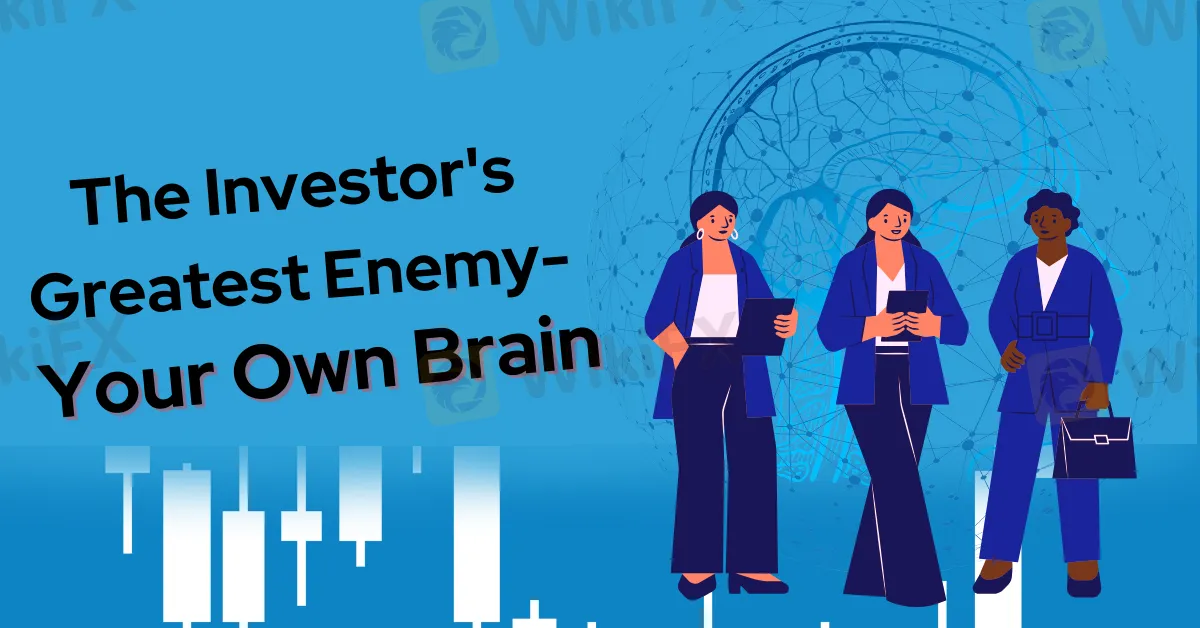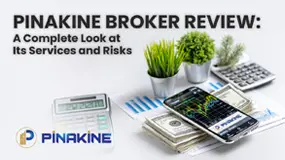简体中文
繁體中文
English
Pусский
日本語
ภาษาไทย
Tiếng Việt
Bahasa Indonesia
Español
हिन्दी
Filippiiniläinen
Français
Deutsch
Português
Türkçe
한국어
العربية
The investor's greatest enemy - your own brain.
Abstract:For a deeper understanding of why investors make irrational decisions, considering the human brain and its responses to pleasure and pain is enlightening.

The three-layered structure of the human brain
In order to gain a deeper understanding of the reasons behind investors' irrational decision-making, considering the human brain and its responses to pleasure and pain is enlightening.
Our brain has evolved over millions of years and consists of three layers. At its core is the primitive brain, which provides the fight-or-flight instinct necessary for survival. Overlaying this is a more evolved mammalian brain responsible for emotions, memory, and habits, contributing to our decision-making. The highest level of brain function is the neocortex, which aids in thought, reasoning, and self-reflection. This is essentially how our human brain operates.
Signals from our brain's primitive areas prompt us to seek pleasure while avoiding pain. However, these same signals can overwhelm the neocortex, leading to irrational behavior. Human fear of pain far outweighs the enjoyment of pleasure, resulting in muddled reasoning.
In the realm of investing, this can lead to perplexing decisions.
The Loss-Aversion Bias in Action
Here's an example based on the groundbreaking research of behavioral economists Amos Tversky and Daniel Kahneman.
Imagine you have two doors to choose from. You're told that if you open Door A, you have an 80% chance of winning $4,000. (Due to an 80% chance of winning, the expected value is $3,200.) But if you open Door B, you're guaranteed to win but only $3,000. Which one would you choose? Tversky and Kahneman found that most participants would choose Door B. This seems like a rational choice, if not the one that maximizes profit. Why gamble when you can get a certain return? It's best to play it safe.

What happens when the situation is reversed? Now, behind Door A, there's an 80% chance of losing $4,000, with the expected value calculated at $3,200, while Door B guarantees a loss of $3,000. The $3,000 loss sets the stage for a downturn, but it turns out that most participants would rather risk a potential $4,000 loss to take a chance on a small probability event that might not incur any loss.

Research consistently shows that people's aversion to loss outweighs their aversion to risk. People are willing to take on more risk to avoid losses than to make gains. Tversky and Kahneman concluded that the pain of losing is two to three times greater than the pleasure of gaining.
Humans feel the pain of loss more intensely than happiness.

This ratio clearly influences investment decisions. Defensive stock strategies provide a pattern of sacrificing some upside in rising markets in exchange for two to three times the downside risk reduction, which may align with human nature. More content on this idea will be forthcoming.
Investors Can Overestimate Their Stock-Picking Prowess
Another bias of human nature is overconfidence. A study in 1999 of nearly 80,000 American households found that, measured by portfolio turnover, households with the lowest trading frequency had an annualized return rate 7 percentage points higher than those with the highest trading frequency. Researchers attributed this difference to investors' overconfidence in their stock-picking abilities — overconfidence leading to lower returns (indicating).
Overconfidence: More trading does not lead to better returns.
Investors are often influenced by behavioral biases such as loss aversion and overconfidence in their investment decisions. Fortunately, there is an investment philosophy that can help overcome overconfidence and risk aversion biases.
Low Turnover Stock Investment Case
Consider a stock investment strategy aimed at limiting downside capture—i.e., exposure to declining markets—while participating in market gains but not fully. This theoretical investment portfolio could capture 90% of market gains during upswings and only 70% of market declines.
How does this 90%/70% defensive strategy help mitigate behavioral biases?
By targeting stocks that strike a balance between offense and defense, low-volatility investments reduce the risk of investors chasing overvalued stocks driven by overconfidence.
However, this strategy does show its mettle in market downturns. If successful, the portfolio's average decline is only 70% of the entire market. This helps mitigate losses, counteracting the bias of loss aversion that might prompt investors to exit the market prematurely. It also helps offset the overconfidence bias of investors in their ability to time the market's turning points, a skill that is almost impossible to consistently replicate. Research shows that missing the best five days of market rebound can have a profound impact on long-term returns.
Trying to Time the Market Can Be Risky

This is because stocks with smaller losses during market downturns require less effort to recover lost ground when prices rebound. Therefore, they can compound from a higher base in subsequent rebounds.
While you might guess that low-volatility strategies would perform poorly over time, history has shown the opposite.
Using data from March 1986 to June 2023, it can be seen that the 90%/70% investment portfolio had an annual return rate 3.1 percentage points higher than the Morgan Stanley Capital International World Index during this period, with lower volatility. We believe the key to building such a portfolio is to focus on stable trading patterns and attractively priced high-quality stocks. Active management with deep fundamental research can be utilized to identify high-quality stocks and better manage volatility. This is crucial in today's environment of rising interest rates, macroeconomic uncertainty, and geopolitical instability.
Humans cannot avoid their human nature. However, by understanding how innate emotional responses become investors' greatest enemy, a low-volatility strategy can be constructed to counteract behavioral biases and provide better investment outcomes over time.
Before making any trades, be sure to search for the broker's rating on WikiFX to preliminarily determine if it's a blacklisted platform.
Looking to invest in US stocks, forex, or futures but afraid of being scammed? The most comprehensive information on brokerage firms is available here.
Before depositing funds, make sure to download the WikiFX APP to safeguard your trading security.

Disclaimer:
The views in this article only represent the author's personal views, and do not constitute investment advice on this platform. This platform does not guarantee the accuracy, completeness and timeliness of the information in the article, and will not be liable for any loss caused by the use of or reliance on the information in the article.
Read more

AMP Futures Exposed: Traders Raise Alarms Over Illegitimate Account Blocks & Bad Customer Service
Has AMP Futures blocked your forex trading account? Does it fail to provide any explanation for this act? Do you face issues concerning deposits to your AMP Futures account? Is the customer service non-existent for any trading query you raise with it? You are not alone! Many traders have been facing these issues upon AMP Futures login. Some of them have commented on AMP Futures review platforms. In this article, we have shared some reviews that you can look at. Read on!

FXGlory Review: Vanishing Profits, Capital Scams & Withdrawal Charges Keep Annoying Traders
Does FXGlory remove all your forex trading account balances upon fund withdrawal requests? Or do you witness incorrect trading account balances after fund withdrawals? Does the Saint Lucia-based forex broker charge you for fund withdrawals? All these and many more scam-related complaints have been filed against the forex broker. In this FXGlory review article, we will discuss several complaints. Read on!

PINAKINE Broker Review: A Complete Look at Its Services and Risks
Finding a trustworthy broker from the huge and often confusing world of online trading options is one of the biggest challenges a trader faces. In this competitive market, PINAKINE Liquidity Limited has appeared, getting attention with promises of high leverage and zero-commission trading. However, a closer look shows important factors that every potential client must think about before investing. The most important thing to consider with PINAKINE is that it has no regulation. This fact completely changes how risky the broker is and has major effects on how safe your investments will be. This review gives a complete and fair examination based on information available to the public. We will break down its services, trading conditions, platform technology, and the possible risks involved, helping you make a fully informed decision.

Uniglobe Markets MT4 Review: A Complete Look at Features, Costs, and Important Safety Issues
For traders who want a well-known and powerful platform, having MetaTrader 4 (MT4) available from a broker is very appealing. Uniglobe Markets says it provides this industry-standard software, along with different account types, high leverage, and many trading options. These features seem designed to work for all kinds of traders, from beginners to experts. However, a trader's success and safety depend on more than just platform features. The trustworthiness and legal standing of the broker are extremely important. This review gives a complete analysis of the uniglobe markets mt4 platform, its trading conditions, and most importantly, a detailed look at the serious safety concerns about the broker's legal status. We will examine the platform's abilities, analyze the fee structure, review official legal actions, and summarize reported user experiences to give a complete picture for anyone thinking about this broker.
WikiFX Broker
Latest News
Private payrolls rose 42,000 in October, more than expected and countering labor market fears, ADP says
Yields Rise, Rate-Cut Odds Slide As ISM Services Survey Signal Inflation Fears
Op-ed: The fuel for the AI boom driving the markets is advertising. It is also an existential risk.
Stonefort Broker Review 2025: Legit or Risky? A Complete Analysis
He Thought It Was a Crypto Investment; It Cost Him RM1.2 Million
CHINA BEST Broker Review: Regulation and Risks
Uniglobe Markets Review 2025: A Safe Broker or a High-Risk Scam?
Chicago Fed's Goolsbee says he's cautious about further rate cuts during shutdown
These Are Europe's Top Economies By Projected 2026 GDP
Quantower Review 2025: User Reviews and Complaints in India
Currency Calculator




